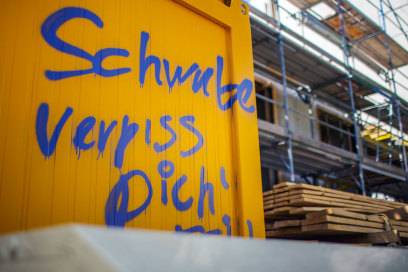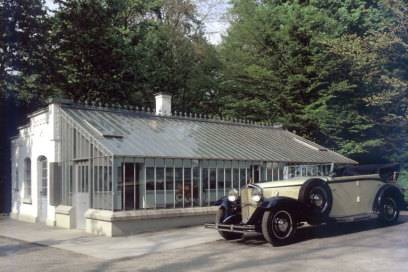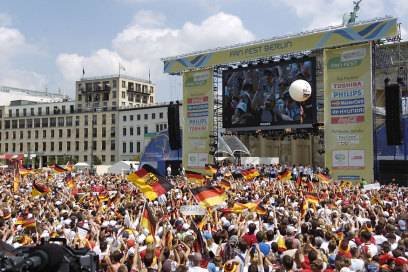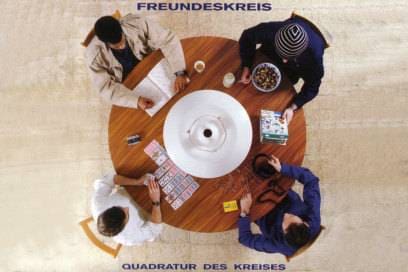September 2, 2024, 3:31 pm | Read time: 7 minutes
There is not much that outsiders immediately think of when they think of Stuttgart. Of course, the “Tatort,” Daimler, Porsche, Bosch, and the VfB, of course, then perhaps the Königstraße, as a tourist attraction, or the Staatsgalerie. In any case, the relationship between non-Stuttgarters, preferably Berliners, and Swabians is tainted by resentment, and the dialect takes some getting used to. This is reason enough to take a look at what the world has to thank Stuttgart for.
“Welcome to the mother city, the motor city on the Neckar, Mecca for rappers, too many complain…” (“Mutterstadt,” Massive Töne feat. Afrob, 1996) – It’s been 18 years since the Stuttgart hip-hop group Massive Töne rhymed about their hometown like this. Just a few verses, but they reveal a lot about the city and the people of Stuttgart. There is talk of the motor city, i.e., of the car industry that determines (almost) everything in the region, of the river that flows through the Swabian metropolis, past vineyards, of the hip-hop culture that started its triumphal march through the country from here, and yes, also of the angry citizen, the Swabian, who loves to complain so passionately, and not just since Stuttgart 21.
But the world owes many inventions and peculiarities to this impatience to know or be able to do many things better. So, let’s take a look at all the things that would not exist without Stuttgart.
Without Stuttgart, there would be no Skytree in Tokyo
Admittedly, a somewhat inflated derivation, but it is plausible when you read what the Stuttgart tourism website says. It says: “After a construction period of 20 months, the Stuttgart television tower was put into operation on February 5, 1956. With its impressive height of 217 m, it is the prototype for television towers all over the world.” Yes, “all over the world.” In other words, if not for the Stuttgart TV tower, the world would not have a prototype. Who knows what they would look like today? Perhaps round, crooked, or even jagged. And even if the Stuttgart TV tower is comparatively unknown beyond the country’s borders today, anyone standing on the 634-metre-high Skytree in Tokyo should remember that the mother of all towers stands exactly 9454 kilometers away, in Stuttgart-Degerloch.
Without Stuttgart, there would be no “Spätzlekrieg” in Berlin
If a newcomer from Stuttgart meets a non-Stuttgarter in Berlin, the conversation usually goes something like this. Non-Stuttgarter: “So, where are you from originally?” Stuttgart resident: “From Stuttgart.” Non-Stuttgarter: “And you probably live in Prenzlauer Berg…” Stuttgarter: “Yes, but I like it there. But I’m thinking of moving to Kreuzberg at some point” – which he would only really do if absolutely necessary.
Yes, the Stuttgarter, the Swabian capital, so to speak, and Prenzlauer Berg have a very close connection. So close that some Swabians who have moved here would rather deny their origins than move away from this, their district. And so it is that the Swabians face hatred in many places, for example, on “Swabians out” posters. Former Bundestag President Wolfgang Thierse (SPD) was also publicly upset about the Swabian influence in his district. A public debate began that was dubbed the “Spätzle War.”

The question then is, what exactly is the issue with Swabians that couldn’t be said about other newcomers? Is it the dialect that makes them objects of hatred and ridicule, which they are gradually working their way out of through painstaking tongue work? Or perhaps their supposed industriousness causes envy, even though there are just as many lazy and idle people among them? Or is it the lack of adaptability they are accused of which causes them to put their foot in their mouths shortly after moving? For example, when they order a “Berliner” instead of a “pancake” at the bakery, or “Brötchen” instead of “Schrippen.” Or when they desperately ask for the sweeping sign in the hallway and are surprised that no one cleans here. Yes, the debate will certainly continue, and until then, we should smile – about Swabians and self-proclaimed Swabian opponents.
Without Stuttgart, there would be no cars
Road trips, Formula 1, drive-in cinemas, drive-ins – unimaginable without Stuttgart. Because it was here, in Bad Cannstatt to be precise, that what literally moves the whole world today originated: the car. In 1883, Gottlieb Daimler brought the first high-speed petrol engine to life in a greenhouse at Taubenheimstraße 13. A few years later, in 1886, Daimler got the engine running in a four-wheeled carriage. One engine, four wheels – the principle that was to change the world was born. Stuttgart was also one attraction richer – Gottlieb Daimler’s legendary greenhouse.

Without Stuttgart, there would be no World Cup victory in 2014
Are you one of those who remember the summer of 2006 as nothing but a fairytale? The German national team played themselves into ecstasy in their own country, and only the eventual world champions, Italy, ultimately stopped them. But eight years later, the triumph finally came in Brazil. And even though Jogi Löw was ultimately the world champion coach, it would not have been possible without Jürgen Klinsmann. Together with Löw – then still assistant coach – he laid the foundations for the coming years at the 2006 World Cup. The two: a duo with close ties to Stuttgart. Löw began his coaching career at VfB in 1996. Although Jürgen Klinsmann first moved to the Stuttgart district of Botnang as a teenager, he eventually moved out into the world via the Stuttgarter Kickers and VfB to Italy, Monaco, England, and Bavaria.

Without Stuttgart, there would be no “squaring of the circle”
Yes, it was a small revolution that took place in 1997. Germany, characterized by fun rap (Fanta 4, Fettes Brot) or Rödelheim Hartreim Projekt, suddenly heard the verses of “A.N.N.A.,” the first single release from the Freundeskreis album “Quadratur des Kreises.” With its partly socially critical, partly poetic lyrics, the album influenced the hip-hop scene throughout Germany, and conscious rap, i.e., rap with a political claim, became suitable for the masses. What the band around Max Herre achieved at the time was also thanks to an infrastructure that the city comrades from the Fantastischen Vier had helped to build up in Stuttgart due to their great commercial success (“Die da”).
Kolchose, an association of Stuttgart artists that included Freundeskreis, became synonymous with good hip-hop. And even if the sounds have become quieter in the meantime, with artists such as Cro or Die Orsons, Stuttgart is still one of the country’s secret hip-hop capitals today – far removed from the gangster attitudes familiar from the Berlin scene.


Top destination The best travel tips for Stuttgart

In Las Pozas, stairs lead to nowhere The bizarre jungle city that cost one man his fortune

Marriage tourism in Denmark Is Copenhagen the Las Vegas of Europe?
Without Stuttgart, there would be no angry citizens
Regardless of what Germany has to criticize about the Swabians, in 2010, the whole country looked with astonishment at the state capital of Baden-Württemberg and realized that the stuffy Swabian was actually a real rebel. Tens of thousands protested against Stuttgart 21 and its terminus station. The citizens vented their anger at large demonstrations.
Young and old, supposedly alternative and bourgeois, left-wing and conservative – they all suddenly had one thing in common: NO Stuttgart 21. The term “angry citizen” was bandied about, and it was the angry citizen who left the CDU stronghold of Baden-Württemberg to the fate of a Green politician, Winfried Kretschmann, in the 2011 state elections. He became the first Green Minister-President of the Federal Republic. In October 2012, a Green, Fritz Kuhn, followed him as Lord Mayor of Stuttgart. The people of Stuttgart are no longer truly angry, at least not in large numbers; they were unable to prevent Stuttgart 21, but now everyone knows that Swabians can indeed be different…


